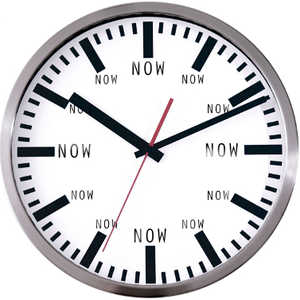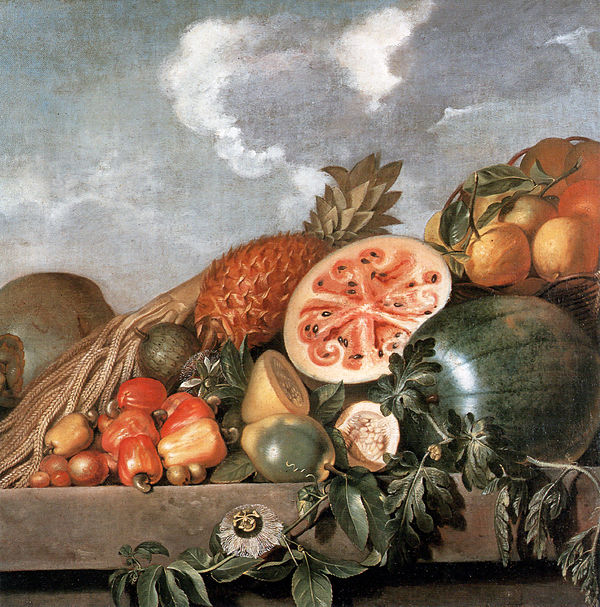Accueil
De Mi caja de notas
Révision datée du 28 août 2022 à 07:44 par Xtof (discussion | contributions)
https://christopheducamp.com/now is my now page on the public web.

Most websites have a link that says “about”. It goes to a page that tells you something about the background of this person or business. For short, people just call it an “about page”.
Most websites have a link that says “contact”. It goes to a page that tells you how to contact this person or business. For short, people just call it a “contact page”.
So a website with a link that says “now” goes to a page that tells you **what this person is focused on at this point in their life.** For short, we call it a “now page”.
See examples by browsing nownownow.com.
Although it’s normal to make the web address “/now”, just like it’s usually “/about” and “/contact” in those other examples, the URL could be anything.
Fondation Louis Vuitton 8, Avenue du Mahatma Gandhi, Bois de Boulogne, 75116 Paris
Simon Hantaï - L'exposition du centenaire
Mercredi 18 Mai 2022 - Lundi 29 Août 2022
A l'occasion du centenaire de la naissance de l'artiste (1922-2008), la Fondation présente une exposition rétrospective inédite rassemblant plus de 130 oeuvres de l'artiste dont beaucoup jamais exposées, pour la plupart de grands formats et centrée sur les années 1957-2000.
L'exposition prend comme point de départ de son parcours didactique la peinture Écriture rose (1958-1959, donation de l'artiste à l'État. Musée national d'art moderne / CNACGP) et couvre les grandes périodes successives de son oeuvre depuis les Peintures à signes, Monochromes, Mariales, Catamurons, Panses, Meuns, Études, Blancs, Tabulas, Peintures polychromes, Sérigraphies et Laissées pour se conclure sur le « dernier atelier ».
Les influences artistiques décisives au développement de Hantaï sont mises en valeur à travers la présentation d'oeuvres de Henri Matisse et de Jackson Pollock. Enfin, les relations d'amitié et de travail nouées au début des années 1960 entre Simon Hantaï et les jeunes artistes de son entourage à la Cité des Fleurs, Michel Parmentier et Daniel Buren sont évoquées dans l'exposition par des confrontations. Une intervention in situ inédite de Daniel Buren, intitulée Mur(s) pour Simon et conçue comme un hommage à Hantaï, est présentée dans le parcours de l'exposition.
Commissaire, direction du catalogue : Anne Baldassari
This article needs additional citations for verification. (January 2020) |

Simon Hantaï (7 December 1922, Biatorbágy, Hungary – Paris, 12 September 2008;[1] took French nationality in 1966) is a painter generally associated with abstract art.
Biography
After studying at the Budapest School of Fine Art, he traveled through Italy on foot and moved to France in 1948. André Breton wrote the preface to his first exhibition catalogue in Paris, but in 1955 Hantaï broke with the surrealist group over Breton's refusal to accept any similarity between the surrealist technique of automatic writing and Jackson Pollock's methods of action painting.
A retrospective of his work was held at the Centre Pompidou in 1976, and in 1982 he represented France at the Venice Biennale.[2]
A representative collection of Hantaï's works is held at the Musée National d'Art Moderne, Centre Georges Pompidou, Paris, and at the Musée d'Art Moderne de la Ville de Paris.
A Simon Hantaï Retrospective opened at the Centre Pompidou on May 22, 2013, with more than 130 works from 1949 to 1990s, and a full color illustrated catalog.
His sons are the musicians Marc, Jérôme and Pierre Hantaï.
Art practice – The folding method
Hantaï began creating pliage paintings in 1960, conceiving of the process as a marriage between Surrealist automatism and the allover gestures of Abstract Expressionism. The technique dominated the work he made during the rest of his career, re-emerging in diverse forms—sometimes as a network of crisp creases of unpainted canvas spanning the composition, and at other times as a monochrome mass manifesting in the center of an unprimed canvas. His technique of "pliage" (folding): the canvas is first folded in various forms, then painted with a brush, and unfolded, leaving apparent blank sections of the canvas interrupted by vibrant splashes of color. The technique was inspired by the marks left folding on his mother’ apron.
From 1967 to 1968 he worked on the Meuns series where he studies the theme of the figure. Meun is the name of a small village in the Forest of Fontainebleau where the artist lived starting 1966. Hantaï stated: "It was while working on the Studies that I realized what my true subject was – the resurgence of the ground underneath my painting."[3] In contrast with the Meun (1967–68), the figure, in the Studies (1969), is absorbed and the white detaches from being the background and becomes dynamic.
Mariales (Cloaks) (1960–62)
Meuns (1967–68) Etudes (Studies) (1969) Blancs (the Whites) (1973–74) Tabulas (from 1974) Laissées (Leftovers)(1981–1994)
References
- ^ Décès du peintre Simon Hantaï Archived 2008-09-18 at the Wayback Machine Le Figaro, 15 September 2008
- ^ Tom McDonough, Hantai's Challenge to Painting, Art in America, March 1999. Archived 2008-03-14 at the Wayback Machine
- ^ Carter Ratcliff, Hantaï in America, 2006. Archived 2017-04-12 at the Wayback Machine Quote from Hantaï in conversation with Paul Rodgers, Paris studio, 1994
Selected bibliography
- New York Times Obituary of Simon Hantaï
- Rosenberg, Karen, "Art in Review: Simon Hantaï," The New York Times, 5/23/13.
- Rodgers, Paul, "Simon Hantaï & Andy Warhol – The Fate of Modern Art in the Post-Second World War Era" 4/1/10.
- Rodgers, Paul, “The Resurgent Ground: Simon Hantaï,” The Modern Aesthetic, 2017.
- Rodgers, Paul, Pablo Picasso | Simon Hantaï: Drama Shared, Cubism and the Fold. 9W Publications, 2020.
- Cochran, Samuel, "Simon Hantaï's Abstract Paintings At Paul Kasmin Gallery, Centre Pompidou," Architectural Digest, 5/7/13.
- "Simon Hantaï," Time Out New York, 4/24/13.
- Ostrow, Saul, "Reviews: Simon Hantaï," Art in America, 9/11/11.
- An essay on Hantaï by art historian Molly Warnock
- Warnock, Molly. Simon Hantaï and the Reserves of Painting. Pennsylvania State University Press, 2020.[1]
- An essay on Hantaï by Ben Lerner
- Dominique Fourcade, Isabelle Monod-Fontaine, Alfred Pacquement, Jean Coyner. Simon Hantaï, Paris: Centre Pompidou, 2013.
- Archives Simon Hantaï
External links
- (in English and French) Simon Hantaï in the French public collections of modern and contemporary art.
- ^ "Books – Simon Hantaï and the Reserves of Painting". Penn State University Press. Retrieved 1 July 2020.
Pastèque : le melon d'eau
Today[1] primidi 11 Fructidor in the year of the Republic CCXXX, celebrating the watermelon.
Aujourd'hui, nous sommes le primidi 11 fructidor, de l'année CCXXX du calendrier républicain, jour de la pastèque. pic.twitter.com/M2nuYYjb85
— Ère républicaine (@Ererepublicaine) August 28, 2022
- ↑ August 28th, 2022 (Sunday)
